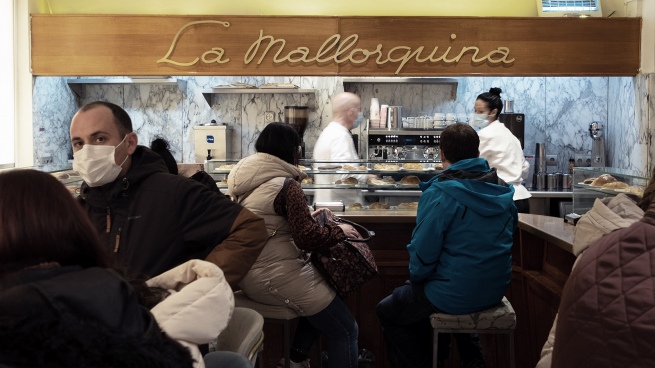The BA.4 and BA.5 subvariants of Ómicron and the relaxation of hygiene care measures are considered responsible for the increase in coronavirus infections in several European countries and raise fears of a new wave, specialists pointed out.
in south africa“where it was first detected BA.4 and BA.5, being BA.5 the most present right now, the pandemic peak ended in mid-May, and its impact was moderate. BA.5 is the majority in Portugal, a country where the incidence is increasing, although at lower levels, for now, than during the previous wave,” the French Public Health Agency explained on Friday.
The increase in infections now threatens other countries.
In EuropeBA.4 and BA.5 are more and more frequent in France, and should be imposed on BA.2, majority since the beginning of the year.
The French health agency confirmed the acceleration of cases in its latest weekly figures, as well as the increase in these two subvariants, a situation similar to that experienced in Germany and the United Kingdom.
The two subvariants appear to spread even faster than previous mutations.

According to several specialists, the end of sanitary control measures favors this increase in infections.
“BA.4 and BA.5 can spread faster than BA.2 because of a double advantage: their contagion factor and the drop in immune protection. Therefore, BA.4 and BA.5 trigger a wave faster than that BA.2 did,” explains Mircea T. Sofonea, a professor at the University of Montpellier, to the AFP news agency.
In Europe, summer, when more time is spent abroad, could be a brake on an increase in cases
But this epidemiologist said that summer “is not a factor that can, by itself, prevent a wave of infections, as was seen with Delta in July 2021.”
Lower degree of danger
So far there are no warning signs that BA.4 and BA.5 are more serious than previous Omicron mutations, say several scientists. But “it’s still too early to tell,” Sophonea says.
But what has been seen in South Africa and Portugal makes some specialists think that the risks of hospitalization and death are lower.
“In South Africa, the BA.4/5 wave did not translate into more hospitalizations and deaths, because there was more immunity in the population,” Tulio de Oliveira, a virologist at the University of Kwazulu-Natal in South Africa, wrote on Twitter on Tuesday. where the omicron variant was detected in autumn 2021.
“But we don’t know the long-term effects,” he clarified.
In Portugalwith a higher vaccination rate, but an older population, hospitalizations reached levels of the previous wave.

But, unlike other countries (several European), South Africa and Portugal were not affected by BA.2.
The presence of BA.2 in a country “could give greater protection against BA.4 and BA.5” since “they are genetically close”, the French Public Health Agency said in May, although this is something that has not yet been confirmed. .
In any case, immune protection declines over time.
“Although the protection provided by having been infected with Ómicron or having received the third dose of the vaccine is still important five months later, especially against severe forms, it decreases against any infection,” Sofonea pointed out.
Several European countries, without waiting for the arrival of autumn, already recommend a fourth dose for the most vulnerable people.
And, although it is not mandatory, several specialists continue to recommend the use of masks in different situations, and to ventilate the spaces.


















